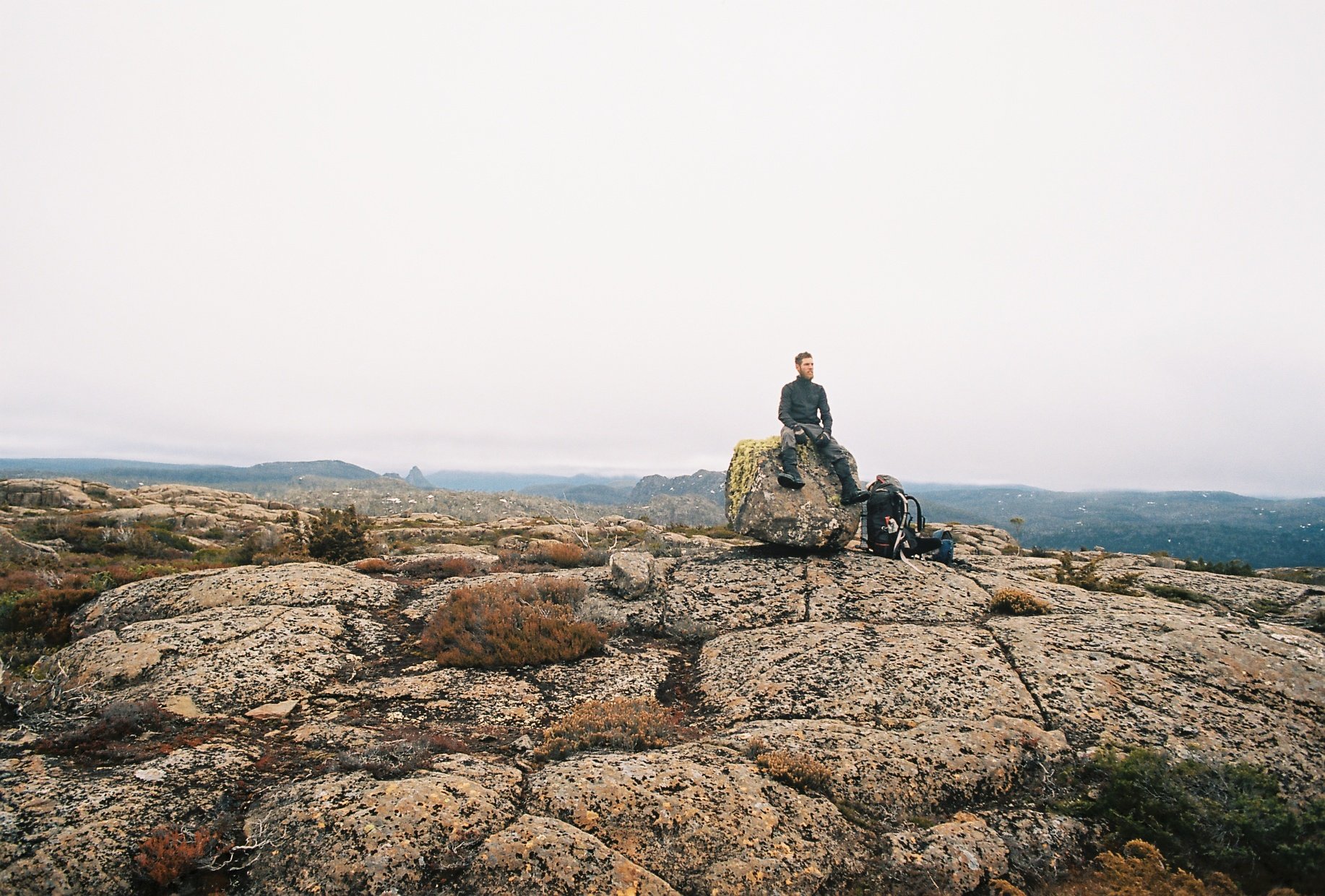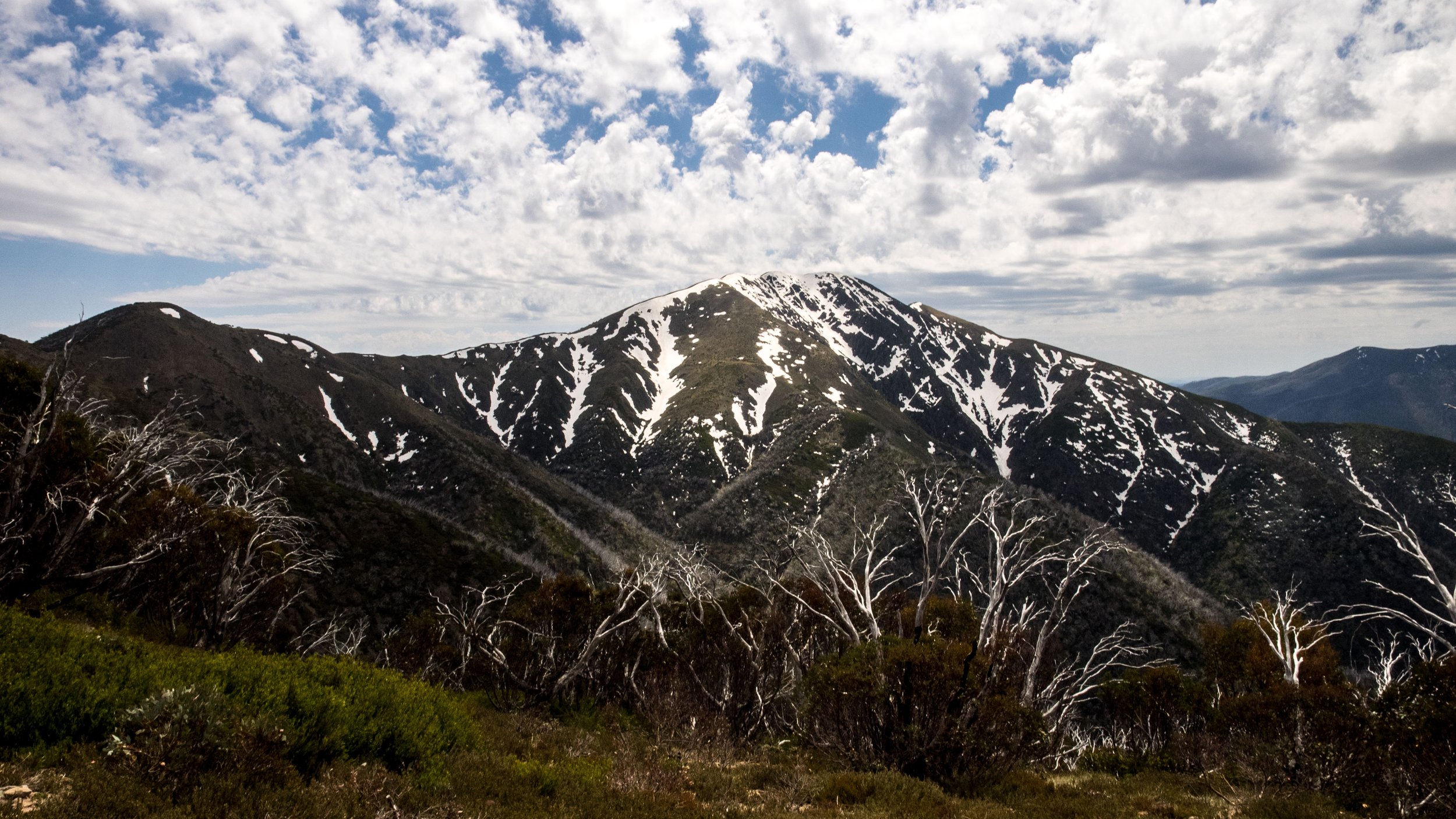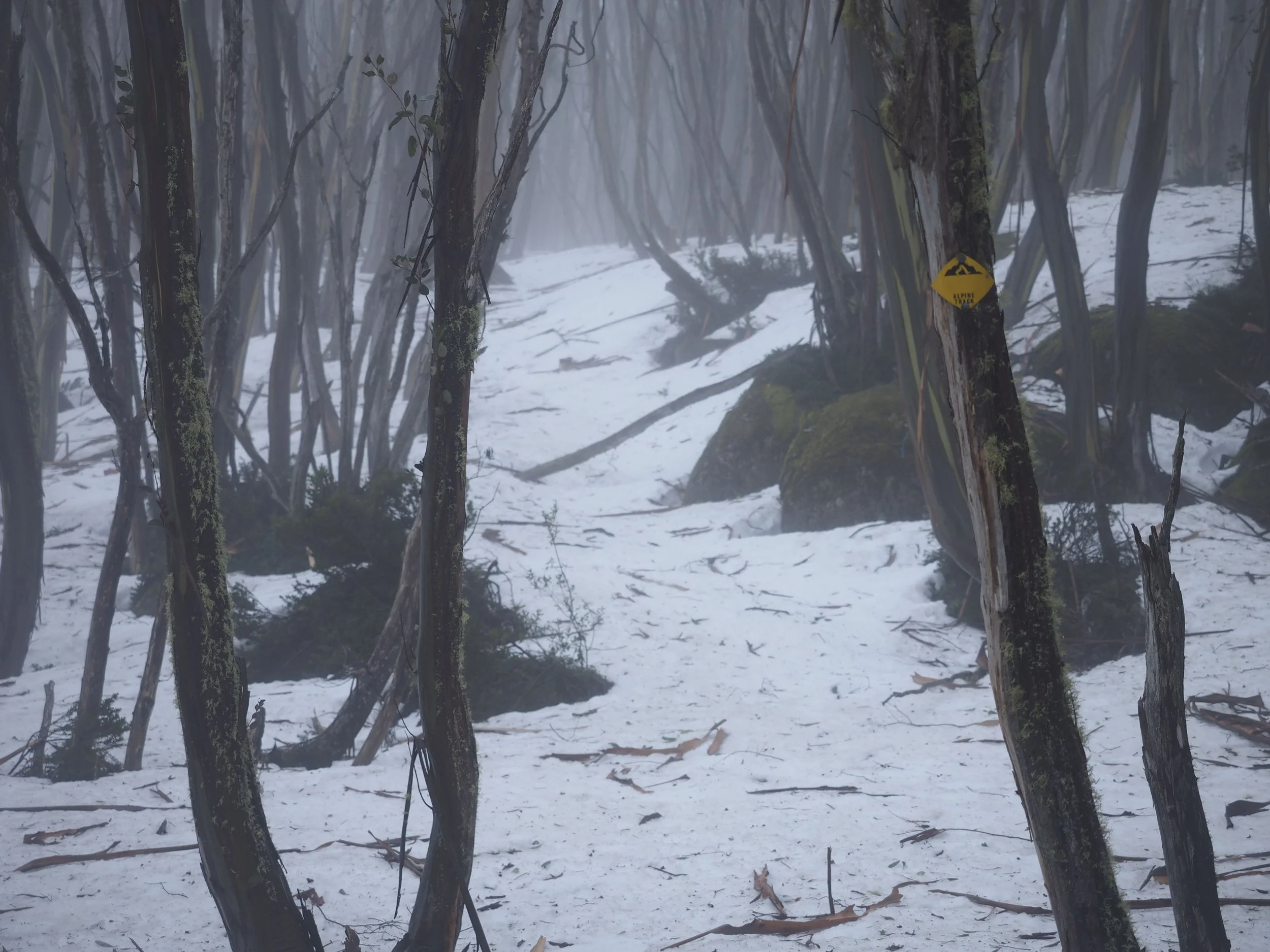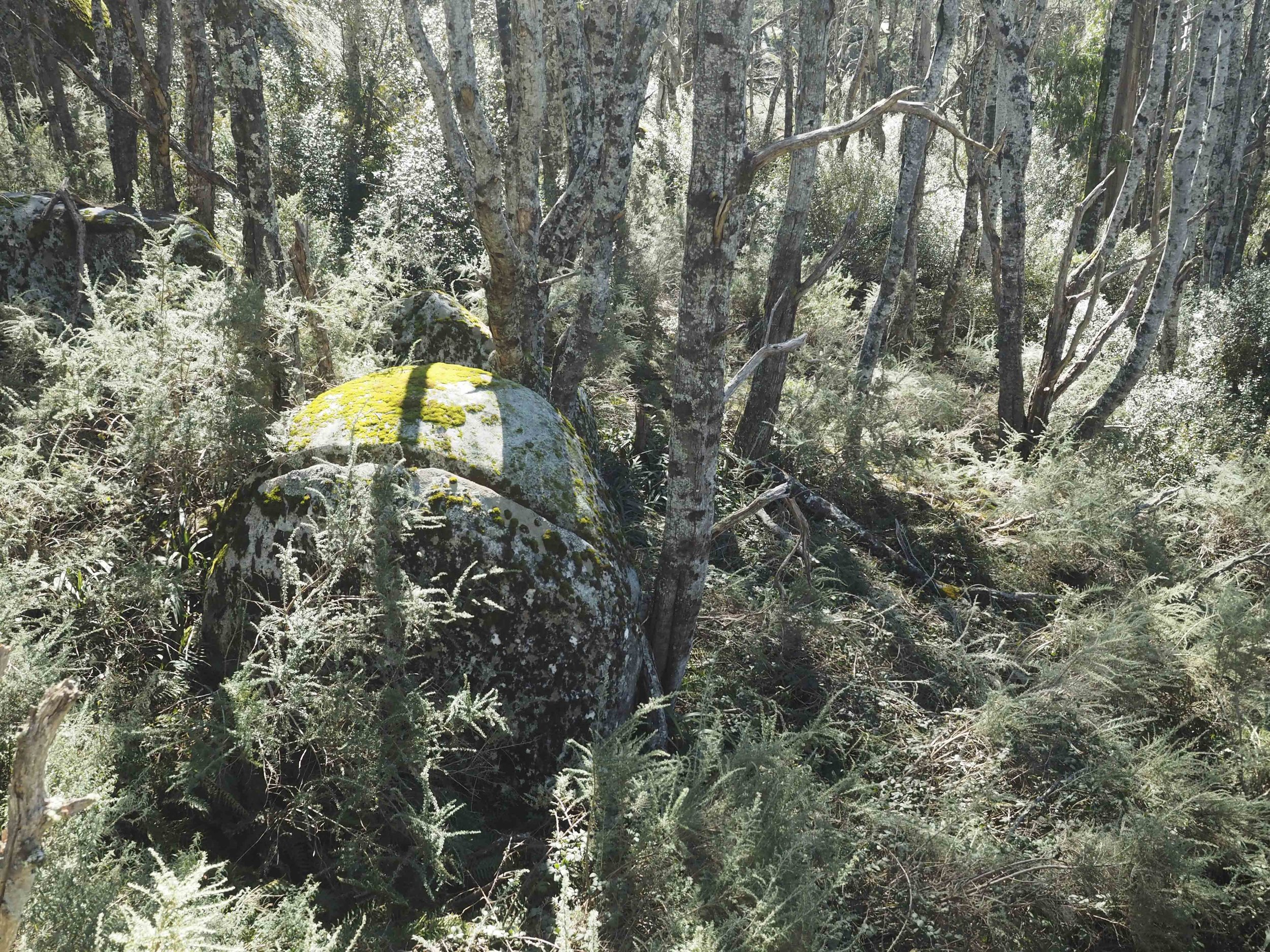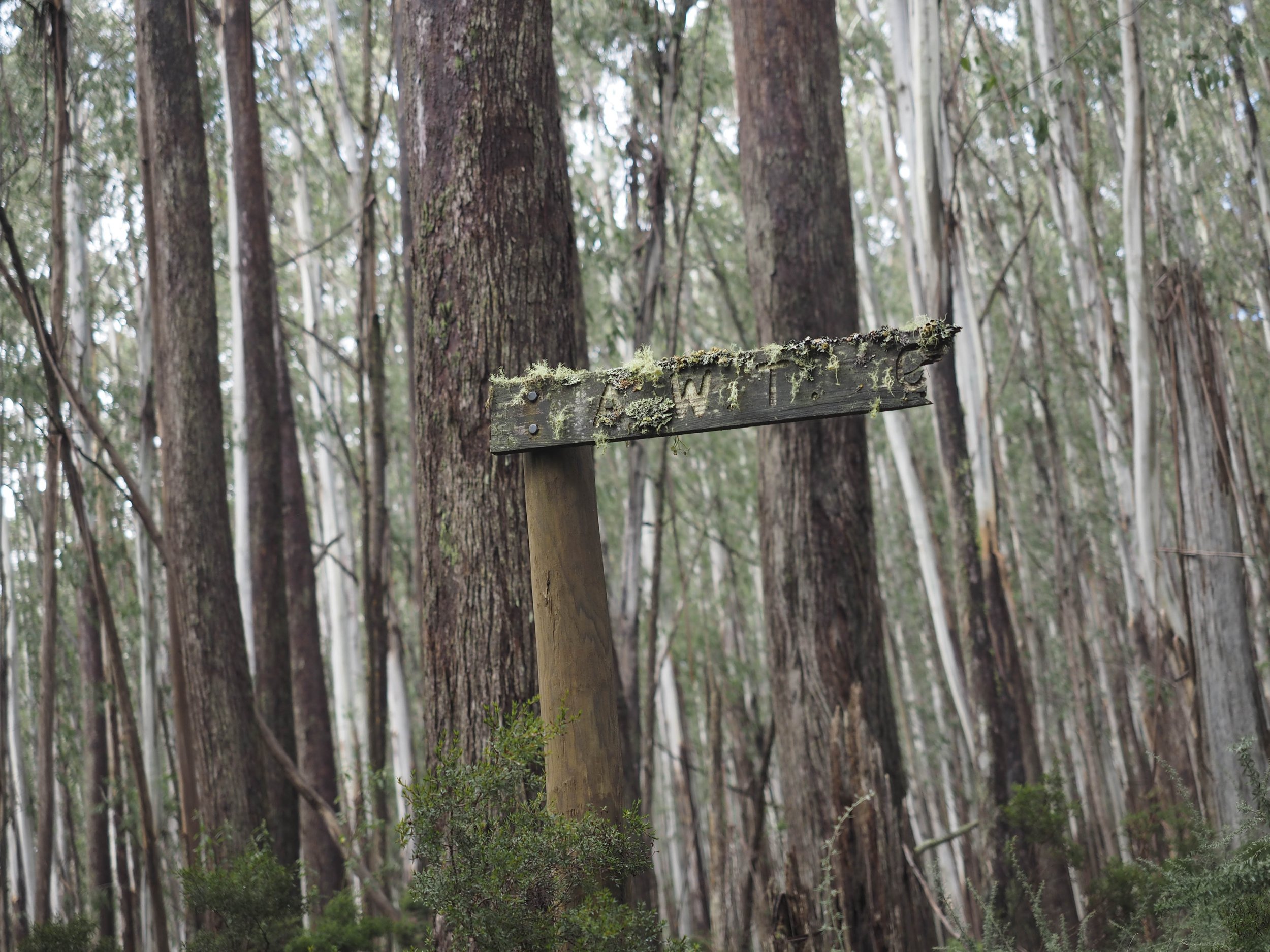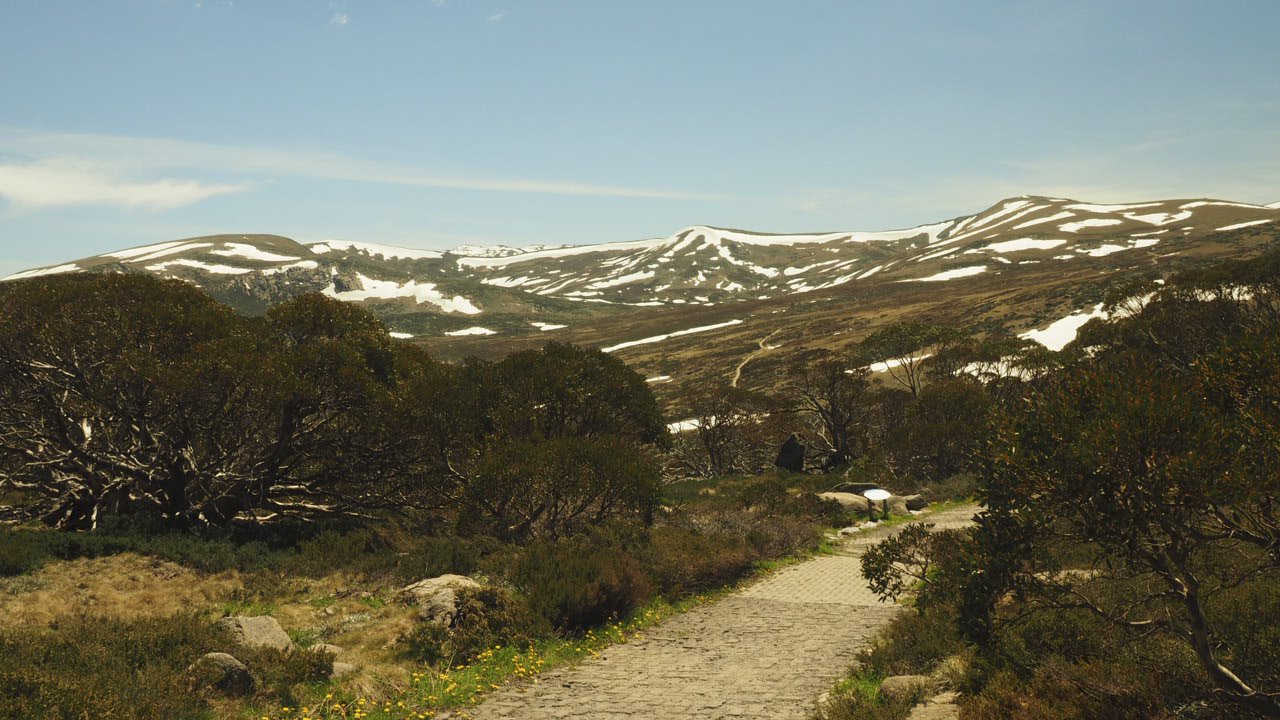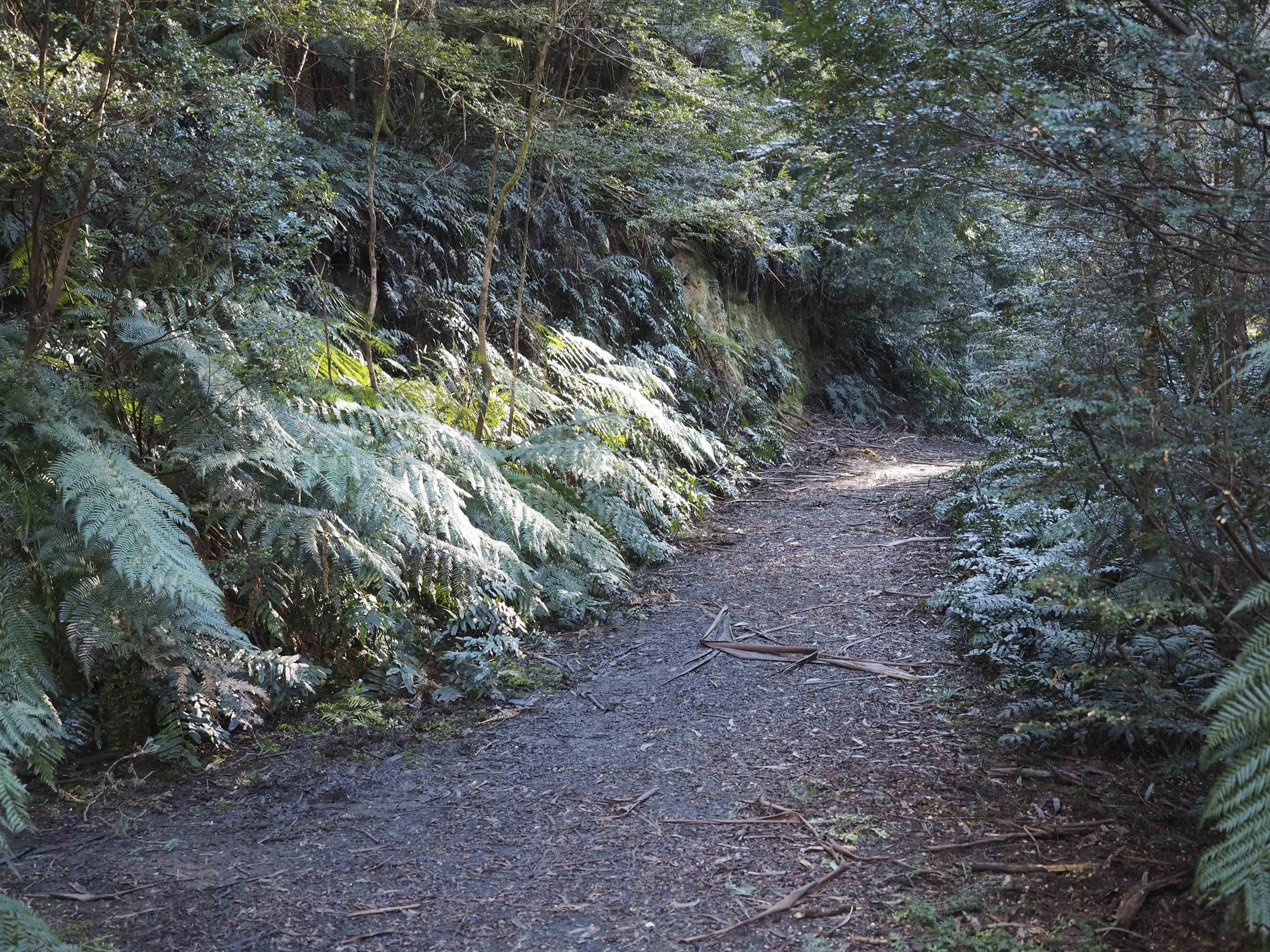It is almost too good to be real, such a magnificent mountain mansion, sitting, waiting up here to be utilised at the travelers leisure.
I was camped in a sheltered saddle; underneath the ominous bluff of the Viking. The oppressive, humid weather that’s been building towards a precipitous release had just about reached breaking point. I was listening to the howling of the wind as it collided with the escarpments hundreds of metres above, creating a violent hum that made me glad I was in a more sheltered location.
I was not entirely surprised to have around 4-5 friendly visitors in my tent after leaving the door open for only a couple of minutes. The bugs, caterpillar and beautiful green spider were all doing their best to escape the imminent rain. I placed them outside gently, underneath the shelter of my vestibule, but away from my sleeping space, where they could crawl into my ear while I slept.
When the sky eventually broke, I was satisfied to listen to the sound of the downpour from the comfort of my tent. Although I was in the wild, I was protected and safe. While the mountain peaks were massaged by the soaking rain, I sat inside my tent, warm, dry and comfortable. It was only a little victory, but one that filled me with appreciation and a childish sense of wonder.
At this stage I’ve walked a tough 34 days, but I was only 3 days away from one of the key milestones of my journey: Mt Hotham. Reaching this alpine village would not only be the first pocket of civilisation I would encounter during my traverse of the Australian Alps but also represent the end of the most challenging section of the Australian Alps Walking Track (AAWT). From here onwards, the average daily elevation change would decrease slightly, and the quality of the walking tracks would improve as well. In many ways, reaching Mt Hotham would be the first real confirmation that I had a strong chance of success in completing my 11 week walk as intended.
Having walked with a 35kg backpack every day for over a month, my body had changed considerably. I had become fitter, leaner and stronger, but my appetite had gone into overdrive. I could not seem to eat enough food to sate my constant hunger.
Yet, my focus was gradually shifting, from centering on the physical challenge and the practical routine towards taking advantage of the mental stillness and freedom that accompanies solo wilderness travel. I realised that by being able to stroll through the woods and observing nature, and all her inhabitants at my leisure, I could learn secrets that are much older than any ideas conceived by humans. Through understanding nature, we have a chance to glimpse the eternal, the timeless and universal.
Day by day, my thoughts began to focus on my present reality. Cravings of the world outside of a civilised life awaiting me upon my return from the wilderness were slowly fading away. Hot showers, comfortable beds and clean fingernails suddenly seemed a lot less important. Like morning mist that rises from the valley after dawn, so my mind had begun to clear, the fog clearing from my thoughts, sharpening my mind with intent.
Nevertheless, the daily challenges of my walk would always bring me back to the practical matters.
The Barry Mountains, with their lack of water and endless series of hills, represented a worthy mental challenge. During this unmaintained section of the AAWT, there was always a branch or two hundred that required ducking under, pushing aside or simply ploughing through, aided by the momentum given to me by the weight of my pack. Every now and then, this ploughing manoeuvre would backfire and I’d find myself snagged on a cheeky branch that has hooked itself into my pack in such a devious way that I would have to reverse in order to gain freedom, feeling every bit as cumbersome as an obese elephant. Through all my wrestling with the undergrowth, I tried to remind myself that an overgrown track is exactly that; an overgrown track. Who was I to blame nature for taking back what’s rightfully hers?
Besides the overgrown tracks and the scrambling over fallen logs, the element of the ‘Dry Barries’ that tested my resolve most was the endless series of wooded knolls, none of which were distinct enough to feel any sense of accomplishment after having reached the top, and yet, infuriatingly, the track seemed to insist on climbing every single one of these unmemorable hills. I felt like Sisyphus, attempting to complete a task that was not only infinite, but also quite tedious.
Then, quite an amazing thing happened. I reached a knoll where there was a small clearing of trees to one side, giving me a small window of a view towards the surrounding hills. As I was looking out over the endless ridges of wooded hills, coloured blue by distance and haze, the sun broke through the clouds, despite a fine drizzle; and low and behold, a faint rainbow appeared over the closest valley I was looking out over. The sudden appearance of beauty caught my breath and I looked on in wonder. Before I could fully appreciate this unexpected arch of colour in the sky, in a flash it was gone, and I was left wondering whether it had been really there at all.
Eventually, as I neared Mt Hotham, the stark beauty of this recently burnt landscape dawned on me. The skeleton trees made the hills appear as if a great curse has befallen the land; the trunks having all been turned to stone, their twisted limbs frozen for eternity. The dead snowgums gave these hills a tragically beautiful and sombre tone, and at no time was this more noticeable than during the stillness of the night, when even the breeze seemed gentler. As the moon illuminated rolling ridge after rolling ridge blanketed with the white skeletons of trees, I felt as if I’ve stepped into the afterlife, where all is eternal and nothing ever stirs.
Then the morning came, as it always does and life resumed once again in all its glory. The birds were awake, singing how wonderful it is to be alive and all the ants scurried across the grass, gathering, gathering, and gathering. With the vastness of this mountain landscape and the vibrancy of its life, how could one’s mind not be at peace? Yet, change is inevitable.
Eventually the new generation of saplings will take over and the old remnants of trees fall, one by one to the ground where they will rot and become one with the soil, providing nourishment for their offspring. This process is already well under way; I heard a mighty crash of what would have surely been an impressive tree while still alive; its fall lasted barely more than a moment, and yet it was the tree’s final farewell gesture, as its rotten roots gave way on the steep slope, its massive trunk surrendering to gravity. The death of a tree barely goes unnoticed.
From the ashes, however, life is always born; the green understorey shooting up beneath; a new generation of saplings vying for the light. Dense and full of fight, these saplings will compete with one another until only the tallest and fittest survive, founding the basis for the next phase in the forest’s life.
When I eventually glimpsed Mt Hotham, it stood solemnly, its bare ridges scarred by roads. Despite the lack of wilderness, it was an imposing view. When I finally rolled in to the General Store, a pub, post office and shop all in one, I was jubilant. Despite already possessing everything I really needed, I bought myself a warm meal, and stocked up on some ‘essentials’ from their grocery store: lollies, butter, bacon, chocolate, fresh bread and some blue cheese. I nearly buckled underneath the extra load, combined with ten days of provisions that I picked up just previously, but I couldn’t have been happier. I made for Derrick’s Hut in a state of bliss, belly full of steak, beer and chocolate cake.
Although jubilant, I was also contemplative. Dealing with the ongoing challenges of the nomadic routine, I came to understand that my elevated mood would pass, like all things pass with time. In general, the things we perceive as bad or unpleasant are in fact neither of those. They could just as easily be seen as good or pleasant by another mind. Life is a series of cycles, mainly unaffected by our humble presence. Whether we label in our own minds subjective sections of these cycles with adjectives is irrelevant, the Earth will keep turning and the sun will keep shining even when the night obscures our view. It’s worth remembering that sunrise is only a victory because it follows the night.
